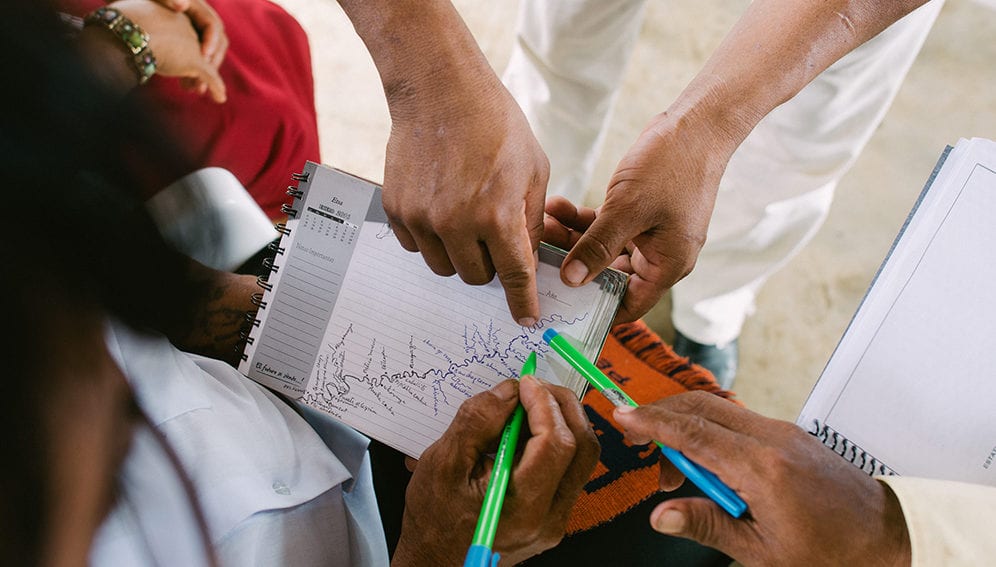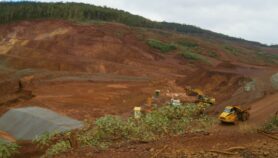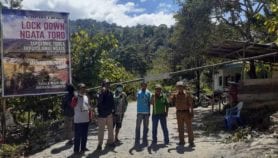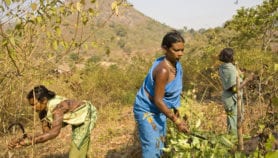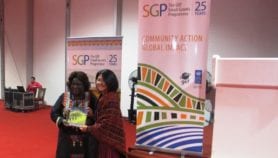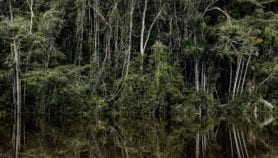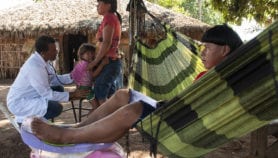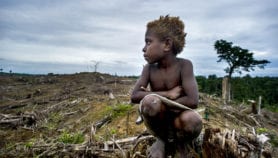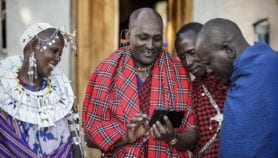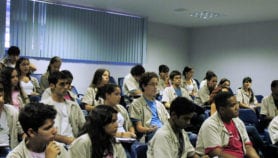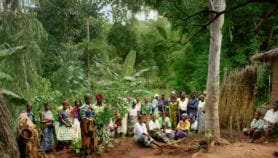Send to a friend
The details you provide on this page will not be used to send unsolicited email, and will not be sold to a 3rd party. See privacy policy.
The average distance from home to school is five kilometres for indigenous children in Kenya. Often this journey is constrained by other factors: no roads and wild elephants or lions hanging around along the path.
Yet the children are meant to do the same exam as their peers in Nairobi, who live within easy reach of education facilities. The literacy level among these communities is below 50 per cent, whereas the national level is 70 per cent.
That is one of the reasons why Maasai activist Stanley Kimaren Riamit, the director of the Indigenous Livelihoods Enhancement Partners in Kenya, recently decided to lobby central government for taking inequality data into consideration when determining national policies or awarding community-level grants.
More than 90 per cent of respondents said they experienced conflicts over their territories and half have lost land to settlements, land grabbing, resource extraction or other forms of land use.
Riamit realised he could make his case better and ask legislators to address his community’s needs by showing, for instance, local primary schools judged as “inaccessible”.
He and other indigenous people from around the world have been assessing the progress towards global goals for sustainable development using the Indigenous Navigator, which was presented in June at the European Development Days (EDD) in Brussels.
Organised by the European Union to bring the development community together, this year the EDD focused on addressing inequalities and “building a world which leaves no one behind”.
The Indigenous Navigator is an online platform to help indigenous people — the original settlers of a particular region — to monitor their rights through a series of surveys conducted in their communities. The information gathered covers 13 broad thematic areas, such as: discrimination and harassment; participation in programmes and development plans; safety of cultural and religious traditions; and extent of the lands traditionally occupied and used by them.
There are an estimated 370 million indigenous people in the world today, representing five per cent of the global population, yet they account for 15 per cent of the extreme poor.
“The purpose and use of the Indigenous Navigator is to lead us to a process that allows indigenous people to give feedback,” said David Nathaniel Berger, programme coordinator at the International Work Group for Indigenous Affairs (IWGIA). “It serves the purpose of documenting the human rights and development situation of indigenous peoples as a key way to interact with duty bearers.”
‘Disregarded and ignored’
In particular, the Indigenous Navigator monitors the implementation of the UN Declaration on the Rights of Indigenous Peoples (UNDRIP), international human rights conventions, essential aspects of the Sustainable Development Goals and the outcomes of the World Conference on Indigenous Peoples.
The idea for the platform came after the adoption of UNDRIP in 2007, when organisations such as IWGIA felt that indigenous peoples’ rights continued to remain “disregarded and ignored”.
The Indigenous Navigator was launched in 2014, as a collaborative initiative involving, among others, Asia Indigenous Peoples Pact (AIPP), Forest Peoples Programme (FPP), the International Labour Organization (ILO) and IWGIA. It obtained EU funding in 2018.
The tools developed by the initiative include a comparative matrix that illustrates how UNDRIP articles are directly linked to other international human rights and labour standard instruments, and two comprehensive questionnaires that can be answered online or in the field.
There is also an Indigenous Navigator Index to rank countries’ performance; and the Indicators framework to detect any gaps between internationally recognised indigenous peoples’ rights, national legislation, and the actual situation in their communities.
However, the work is still in progress. Calculated upon information collected by experts on a national level and indigenous peoples on a community level, the data takes time to gather.
A participatory approach at a local level has been fundamental in mobilising communities, according to Joan Carling of the Indigenous Peoples Major Group for Sustainable Development.
“Data disaggregation by ethnicity was a critical issue during negotiations [of the 2030 Agenda for Sustainable Development] because some states refused to provide it, but we argued that it is the only way we will be visible and we can be counted,” she said. “Indigenous people are not just vulnerable groups: we are development actors and cultural diversity is part of sustainable development.”
Territorial conflicts
The navigator began to generate in-depth data in early 2018. Pilot phase data will then be incorporated into the new Indigenous Navigator when the tools are finalised.
A total of 134 community surveys entered the portal and 116 surveys have been validated and published so far, covering indigenous populations of more than 200,000 people. The pilot countries were Bangladesh, Cambodia, Nepal, the Philippines, Bolivia, Colombia, Peru, Suriname, Cameroon, Kenya and Tanzania.
In results published so far, more than 90 per cent of respondents said they experienced conflicts over their territories and half have lost land to settlements, land grabbing, resource extraction or other forms of land use without consultation.
Another problem is linked to the physical distance between indigenous communities and national institutions. Carling said that many people live in areas so remote that they have no birth certificate and no citizenship in their own country. Language barriers also limit access to rights. For instance, the navigator shows a 0 score on recognition of indigenous languages in laws and policies in both India and the Philippines.
Translated in local languages, the surveys aim to help communities discover their rights and take action. “For us, the Indigenous Navigator is a tool to tell our story in our own way,” Riamit said. “The challenges of course remain: a fast, small grounds-project has generated a lot of interest, awareness and demand for action with really little resources to respond. But now we can speak a language that governments understand.”
The statistics will be used to support the scaling-up of data collection and the preparation of knowledge products such as reports and fact sheets on the situation of indigenous peoples.
Natasha Blanchet Cohen, professor at Concordia University and director of the Youth Research Network Quebec (Indigenous Stream), said: “It is an extremely welcome tool. The power of the navigator is that it provides a unique opportunity to bring together indigenous data from around the globe with data that they input and control.”For the next phase of the project, the community-generated data will be used to draw up activities and solutions. Through participatory workshops and discussions, communities are developing project proposals to address the issues uncovered during the research.
Blanchet Cohen believes that “with the accompanying capacity-building component, such tools can bring hope to indigenous youth around the world to monitor their rights and be better equipped for advocacy".


